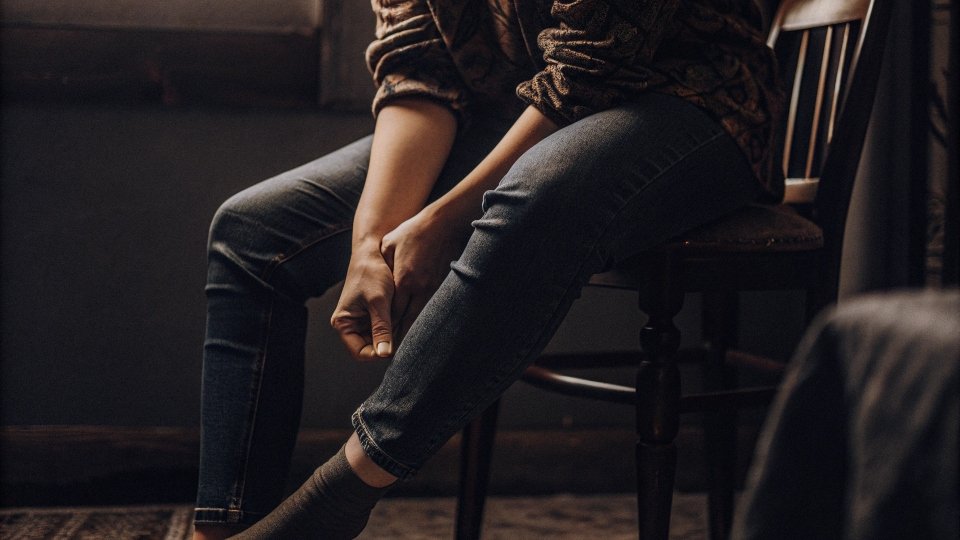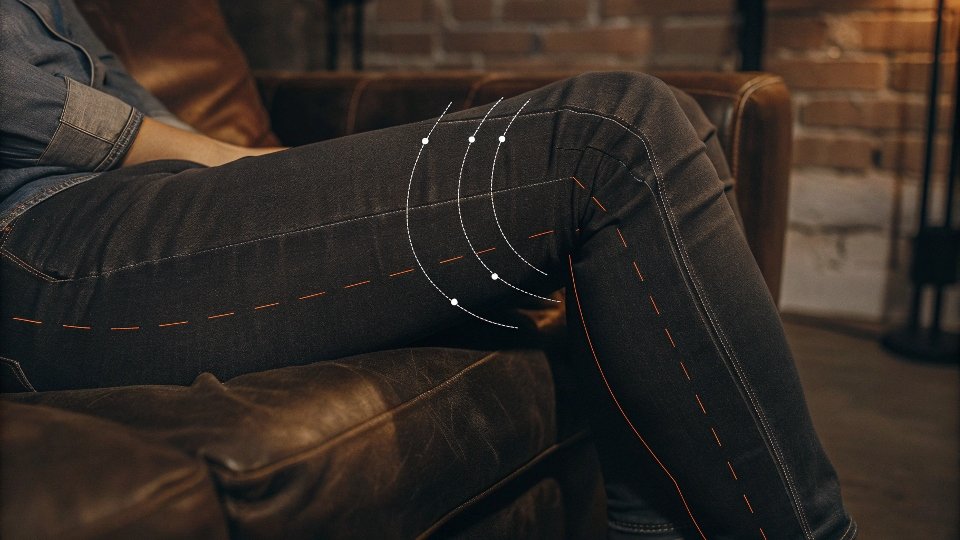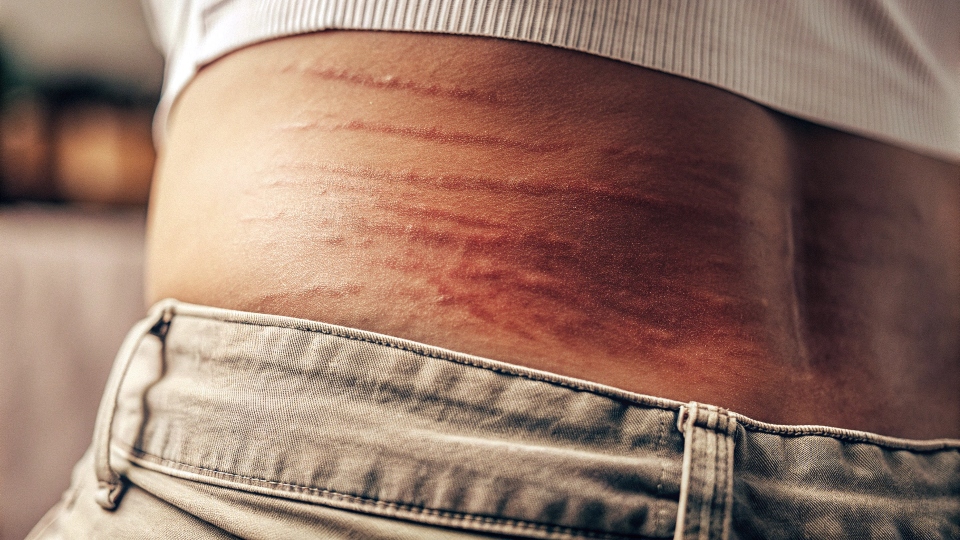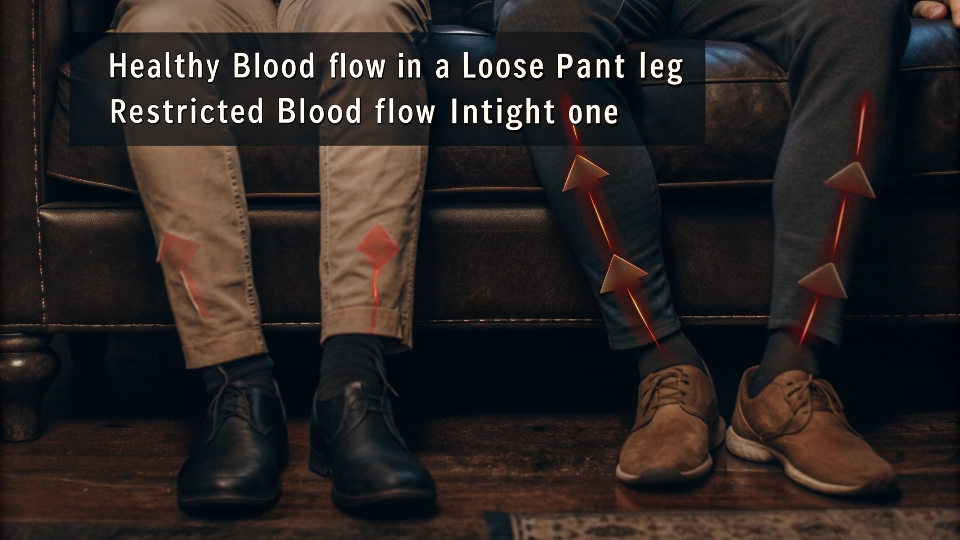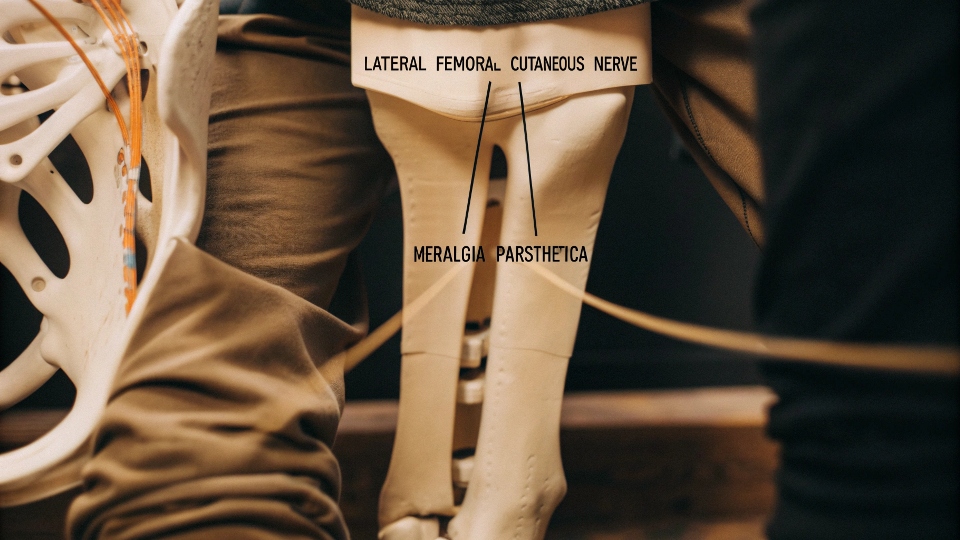Your legs feel heavy and sore at the end of the day. You blame standing too long or a hard workout, but could the real reason be hiding in your wardrobe?
Yes, tight jeans1 can definitely make your legs ache. The constant pressure restricts blood flow2 and compresses your leg muscles, leading to a dull, throbbing pain, heaviness, or even tingling.
In my two decades of making jeans, I’ve learned that the most important part of any pair is the fit. A jean that looks fantastic but causes physical pain is a poorly designed product.
A designer like Dean understands this balance. He knows that the goal is to create a silhouette that flatters the body without harming it.
When customers complain about aches and pains, it's a sign that the design has prioritized aesthetics over well-being, and that's a signal to us in the factory that we need to re-evaluate the cut or the fabric.
Why do my legs hurt after wearing tight jeans?
You slip into your favorite skinny jeans, feeling stylish and confident. But by the afternoon, a persistent, dull ache has taken over your legs, completely ruining the feeling.
Your legs hurt after wearing tight jeans because the fabric constricts blood vessels and compresses muscles. This reduces blood flow and traps waste products like lactic acid, which causes soreness and fatigue.
There are two main reasons your legs ache from tight jeans, and they both come down to pressure.
First is your circulatory system. Your legs need a constant supply of fresh, oxygenated blood, and they need to send used blood back to the heart.
Tight jeans, especially those made from rigid, non-stretch denim, can squeeze the veins in your legs. This makes it harder for blood to flow back up, creating a sort of traffic jam.
When blood flow is slow, waste products like lactic acid, the same stuff that makes your muscles sore after a workout, can build up. This buildup results in that familiar dull, heavy, and achy feeling.
Second is muscle compression3. Your muscles are not meant to be held in a constant, tight grip. They need to be able to move and flex naturally.
When your jeans are too tight, they constantly press on your muscles, leading to tension and fatigue.
This pressure can also affect the superficial nerves in your legs, which can lead to feelings of tingling or "pins and needles4."
What are the symptoms of tight jeans5?
You feel some discomfort, but you're not sure if it's serious. How can you tell if your jeans are just snug or if they are actually causing a problem for your body?
Common symptoms of overly tight jeans include a dull ache in the legs, tingling or numbness, red marks on the skin where seams press in, and sometimes digestive issues like bloating or heartburn.
The signs that your jeans are too tight go beyond just a simple ache. Your body will give you several clues that it’s under too much pressure. It's important to listen to these signals.
On Your Skin
This is the most obvious sign. After you take your jeans off, look for deep red lines or indentations where the seams were.
This is a clear indicator that the pressure was significant. In some cases, constant rubbing from tight fabric can also cause chafing or skin irritation.
In Your Legs
This is the main topic we're discussing. Symptoms can range from a general feeling of heaviness to a specific, throbbing ache.
You might also experience muscle cramps or a "pins and needles" sensation. This tingling feeling is a sign that nerves are being compressed.
In Your Abdomen
The pressure isn't limited to your legs. A tight waistband can also cause problems. It can push on your stomach, leading to bloating, abdominal pain, and even acid reflux or heartburn, especially after you have a meal.
Can tight jeans affect circulation?
You've heard that tight clothes can be bad for your blood flow. Is this a real medical concern that you should worry about, or is it just an old myth about skinny jeans?
Yes, tight jeans can absolutely affect circulation in a significant way. The fabric acts like a compression band, squeezing blood vessels and making it harder for blood to flow properly through your legs.
This is not a myth; it's basic physiology. Your circulatory system is a network of highways. Arteries carry oxygen-rich blood away from the heart, and veins carry it back.
The veins, especially the ones closer to the skin, have thinner walls and lower pressure, so they are much easier to squeeze shut.
When you wear tight jeans, the fabric puts constant pressure on these veins.
This slows down the return of blood from your legs to your heart. This condition is sometimes called venous stasis6.
Think of it like stepping on a garden hose. The flow slows to a trickle.
In your body, this "traffic jam" can cause fluid to pool in your lower legs, which can lead to temporary swelling, especially around the ankles.
More importantly for the aching feeling, it means that metabolic waste isn't being cleared out of your muscles efficiently.
For most healthy people, the effect is temporary and goes away once you take the jeans off.
But for individuals with pre-existing conditions like varicose veins, this constant pressure can make the problem worse.
What is tight jean syndrome?
You've been feeling a very specific type of discomfort in your thigh lately. It’s not a muscle ache, but more of a surface-level burning or numbness. Could this be "tight jean syndrome"?
Tight jean syndrome is the common name for a medical condition called meralgia paresthetica7. It is a specific nerve problem that causes tingling, numbness, and burning pain in your outer thigh.
This is a very important distinction to make. The general leg aches we've been discussing are due to muscle and circulation issues.
"Tight Jean Syndrome," or meralgia paresthetica, is different because it is caused by the compression of a single, specific nerve. This nerve is called the lateral femoral cutaneous nerve.
It runs from your spine, through your pelvis, and down your outer thigh. Its only job is to provide sensation to the skin on that part of your leg.
This nerve can get pinched as it passes near your hip bone, especially if you wear tight, low-rise jeans.
The pressure from a rigid waistband or a thick seam can be enough to irritate it. The symptoms are very distinct from a muscle ache.
It won't feel deep inside your leg. Instead, you'll feel it on the surface of your skin. The most common feelings are burning, tingling, or a numb patch on your outer thigh.
The good news is that it is almost always reversible by simply choosing to wear looser pants.
Conclusion
Tight jeans can cause real leg aches by harming circulation and compressing muscles. Always listen to your body and choose a fit that gives you both great style and pain-free comfort.
-
Explore how tight jeans can impact your leg health and comfort, and learn about better alternatives. ↩
-
Understanding the relationship between tight clothing and blood flow can help you make healthier wardrobe choices. ↩
-
Discover the effects of muscle compression on your body and how to avoid discomfort. ↩
-
Explore the meaning behind the pins and needles sensation and its connection to tight clothing. ↩
-
Identify the symptoms of tight jeans to better understand when your clothing may be causing discomfort. ↩
-
Explore the condition of venous stasis and its connection to tight clothing for better health awareness. ↩
-
Learn about meralgia paresthetica, its symptoms, and how to prevent it from tight jeans. ↩

